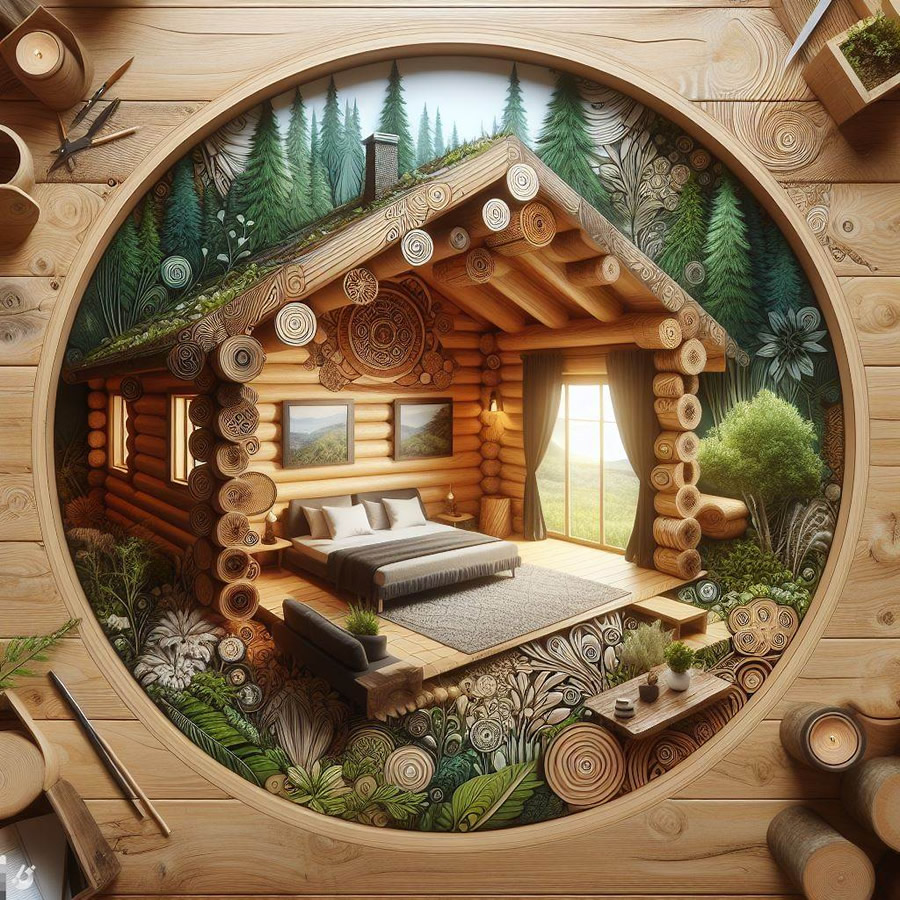Bringing Nature Home: Embracing Biophilic Design Elements for Your Log Cabin
In our fast-paced, urbanised world, our connection to nature often takes a backseat, leading to feelings of disconnection and stress. Biophilic design, a revolutionary concept in architecture and interior design, seeks to address this issue by incorporating natural elements into our living spaces. Log cabins, with their inherent connection to the outdoors, provide the perfect canvas for embracing biophilic design. In this article, we explore the beauty and benefits of biophilic design elements for log cabins, allowing you to create a harmonious and nurturing environment that celebrates the wonders of the natural world.

Biophilic design is a design philosophy that emphasises the integration of natural elements, patterns, and materials into the built environment. The aim is to reconnect individuals with nature, thereby promoting well-being, reducing stress, and enhancing overall happiness. By incorporating biophilic design elements into log cabins, we evoke the restorative power of nature, creating spaces that inspire and rejuvenate.
A primary aspect of biophilic design is maximising natural light. Log cabins are inherently characterised by large windows that invite abundant natural light into the living spaces. Embrace this feature and ensure your cabin is designed to make the most of daylight. Natural light not only enhances the visual appeal of the interiors but also positively impacts our mood and circadian rhythms.
Incorporating indoor plants and living walls is a hallmark of biophilic design. Strategically place potted plants, hanging planters, and greenery along windowsills to bring the outdoors inside your log cabin. Living walls, featuring vertical gardens adorned with lush vegetation, provide a stunning and dramatic focal point while promoting air purification and a sense of tranquillity.
Utilise natural materials and textures throughout the log cabin's interior to enhance the biophilic experience. Exposed wood beams, stone accents, and natural fabrics evoke a tactile connection to nature, enriching the cabin's rustic charm while grounding residents in the beauty of the natural world.
Take advantage of the log cabin's surroundings by incorporating thoughtful views of nature. Arrange furniture and seating areas to optimise sightlines of the surrounding landscape, whether it's a verdant forest, rolling hills, or a serene lake. Capturing these vistas from within the cabin creates a seamless integration with the outdoors.
Introduce water features, such as indoor fountains or a small pond near the cabin, to bring the calming sounds of nature indoors. The gentle trickling of water creates a soothing auditory experience, further reinforcing the connection to the natural environment.
Infuse your log cabin with nature-inspired art and decor. Adorn the walls with landscape paintings, wildlife photographs, or botanical prints. Decorative elements featuring organic shapes and patterns add a touch of biophilic design to the overall aesthetic.
Conclusion:
Embracing biophilic design elements for your log cabin transforms your living space into a sanctuary that celebrates nature's beauty and serenity. The integration of natural light, indoor greenery, and the use of natural materials fosters a deeper connection to the outdoors, promoting well-being and tranquillity. By evoking the essence of nature in your log cabin, you create a restorative and nurturing environment, where you can find solace, inspiration, and a renewed sense of harmony with the world around you.
Author - Martin Corby
Posted - 03 Aug 2023
Disclaimer: This information is subject to change and as such, is provided for informational purposes only and does not constitute professional advice. Readers are encouraged to verify the details independently.
© Copyright 2001 - 2024 Garden Adventure Ltd